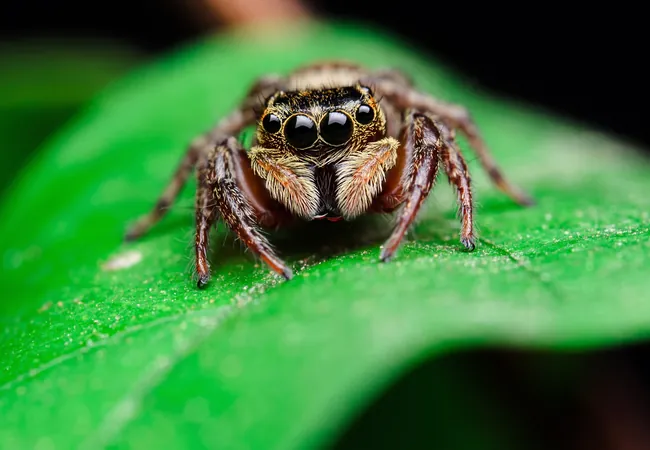
Revolutionary DNA Technique Uncovers Insights into Endangered Dolphins
2025-07-08
Author: Jia
Unlocking the Secrets of Endangered Dolphins
In the fight to save endangered species, understanding genetic history is crucial. This is especially true for New Zealand's Hector's and critically endangered Māui dolphins, both of which are facing dire threats due to their shrinking numbers and coastal habitat.
A Breakthrough in Genome Assembly
Researchers at the University of Otago's Department of Anatomy have unveiled a groundbreaking DNA assembly process that successfully creates high-quality reference genomes for these dolphins, overcoming the challenge of working with degraded samples. Led by Dr. Alana Alexander and Ph.D. candidate Sebastian Alvarez-Costes, this collaborative effort includes experts from various universities, demonstrating unprecedented innovation in marine biology.
A Snapshot of Vulnerability
With fewer than 100 individuals left, the Māui dolphin stands as one of the most critically endangered marine mammals worldwide. This new genomic research reveals that Māui dolphins possess 40% lower genetic diversity than their Hector’s counterparts, indicating serious risks of inbreeding and reduced adaptability to environmental changes.
Genetic Drift and Isolation
The two dolphin subspecies diverged around 20,000 years ago during the last ice age, isolating their populations along the New Zealand coast. This isolation has implications for their evolutionary paths, shaping their current genetic vulnerabilities.
Implications for Conservation Strategies
The genomic data not only illuminates these dolphins’ genetic health but also equips conservationists with critical information for making informed protection decisions. Alvarez-Costes emphasizes that understanding both genetic diversity and historical context is key to effective conservation.
An Innovative Genomic Pipeline
Utilizing genomes from closely related species, like the bottlenose dolphin and vaquita, researchers developed a clever assembly technique that maps 99% of the dolphin genomes to chromosomes, marking a significant achievement in genomic research. This innovative pipeline has opened doors for studying other endangered species using similar methodologies.
A Global Perspective
Conservationists worldwide are optimistic about the findings from this project. The ability to derive valuable genetic information from less-than-perfect samples could revolutionize conservation genomics, providing a model for future studies.
Cultural Significance and Ethical Responsibilities
This project underscores the cultural importance of these dolphins in Māori traditions, serving as guides and spiritual symbols. Researchers have taken care to consult with local iwi (tribes), emphasizing the responsibility to respect the cultural heritage associated with these species.
Future Directions in Conservation Genomics
As scientists around the globe rally to address the challenges posed by reduced genetic diversity, the work surrounding Hector’s and Māui dolphins is proving to be a pivotal point in the quest to safeguard the future of endangered marine species.




 Brasil (PT)
Brasil (PT)
 Canada (EN)
Canada (EN)
 Chile (ES)
Chile (ES)
 Česko (CS)
Česko (CS)
 대한민국 (KO)
대한민국 (KO)
 España (ES)
España (ES)
 France (FR)
France (FR)
 Hong Kong (EN)
Hong Kong (EN)
 Italia (IT)
Italia (IT)
 日本 (JA)
日本 (JA)
 Magyarország (HU)
Magyarország (HU)
 Norge (NO)
Norge (NO)
 Polska (PL)
Polska (PL)
 Schweiz (DE)
Schweiz (DE)
 Singapore (EN)
Singapore (EN)
 Sverige (SV)
Sverige (SV)
 Suomi (FI)
Suomi (FI)
 Türkiye (TR)
Türkiye (TR)
 الإمارات العربية المتحدة (AR)
الإمارات العربية المتحدة (AR)